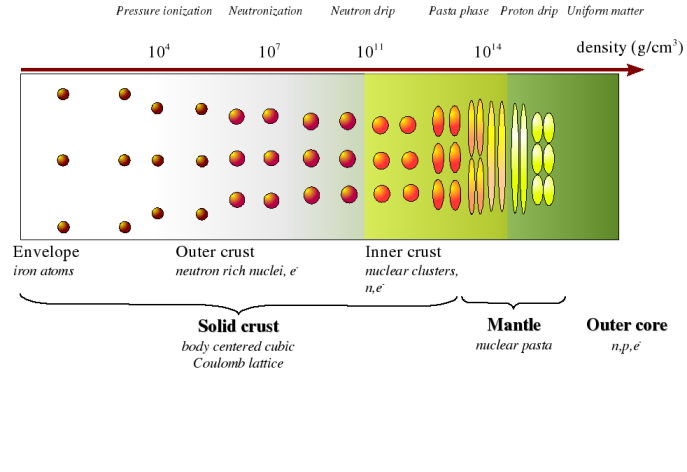Neutron star crust
The crust of neutron stars extends down to about 1 kilometer below the
surface, with densities ranging from a few grams per cubic centimeters
on the ground up to several hundred thousand billion grams per cubic
centimeters at the bottom.
Here is a sketch (the different layers are not to scale) of the
structure of neutron star crust, assuming that the matter is in its
ground state ("cold catalyzed matter"):

The outermost layers of a neutron stars are composed of iron. At
densities above ten thousand grams per cubic centimeters, the atoms are
fully ionized due to the pressure of the upper layers. The free
electrons are degenerate and become relativistic at densities beyond a
few million grans per cubic centimeters. With increasing densities, the
nuclei are more and more neutron rich owing to electron captures which
convert protons into neutrons. This neutronization of the matter leads
to the existence of a neutron ocean which permeates the inner layers of
the crust at densities beyond around four hundred billion grams per
cubic centimeters. The crust dissolves into a uniform mixture of
neutron, protons and electrons when the density reaches about hundred
million billion grams per cubic centimeters. A mantle of nuclear
clusters with unusual shapes (slabs, cylinders or bubble like
structures), so-called nuclear "pastas", might possibly exist near
the crust-core interface.
Living Review in Relativity about the Physics of Neutron Star crusts
Back to main page
